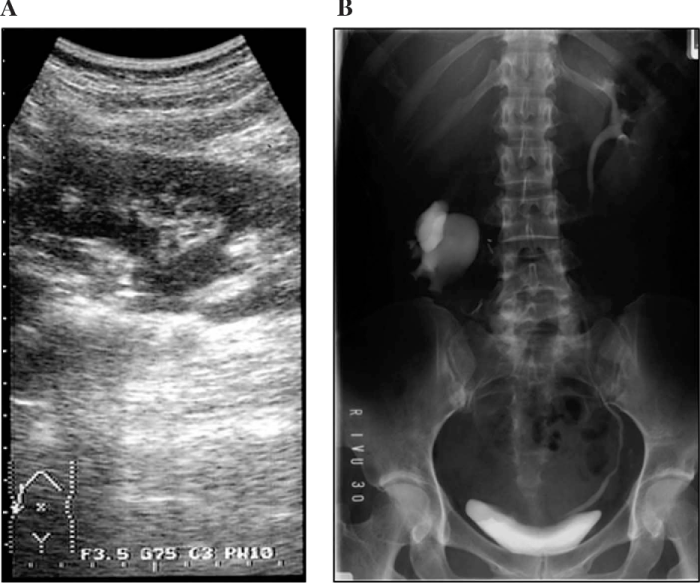Patient has ovarian vein syndrome and has ureterolysis performed – Patient with ovarian vein syndrome and has ureterolysis performed introduces an in-depth examination of a complex medical condition and its surgical management. This article delves into the intricacies of ovarian vein syndrome (OVS), its causes, symptoms, and the rationale for ureterolysis as a treatment option.
By exploring the surgical techniques, preoperative considerations, and postoperative care involved in ureterolysis, we aim to provide a comprehensive understanding of this procedure’s role in alleviating the debilitating symptoms of OVS.
As we embark on this medical journey, we will uncover the latest data on the success rates and potential complications associated with ureterolysis for OVS. Moreover, we will delve into the impact of this surgical intervention on the quality of life for patients afflicted with this condition.
Ovarian Vein Syndrome

Ovarian vein syndrome (OVS) is a condition in which the ovarian veins become compressed, leading to impaired blood flow and pelvic congestion. This can cause a range of symptoms, including pelvic pain, swelling, and infertility.
The causes of OVS are not fully understood, but it is thought to be related to hormonal changes, anatomical variations, and previous pelvic surgery. Risk factors for OVS include a history of pelvic inflammatory disease, endometriosis, and multiple pregnancies.
Symptoms of OVS can include:
- Pelvic pain, especially during or after menstruation
- Swelling in the lower abdomen or legs
- Varicose veins in the vulva or vagina
- Infertility
- Dyspareunia (painful intercourse)
Ureterolysis
Ureterolysis is a surgical procedure to free the ureter from adhesions or other obstructions. It is often performed to treat ureteropelvic junction obstruction (UPJO), a condition in which the ureter is blocked at the point where it connects to the kidney.
Indications for performing ureterolysis include:
- UPJO
- Retroperitoneal fibrosis
- Ureteral stricture
- Ureteral kinking
There are two main surgical techniques used in ureterolysis: open surgery and laparoscopic surgery. Open surgery involves making a large incision in the abdomen, while laparoscopic surgery involves making several small incisions and using a camera to guide the surgery.
Management of OVS with Ureterolysis, Patient has ovarian vein syndrome and has ureterolysis performed
Ureterolysis is a common treatment for OVS. The rationale for performing ureterolysis in patients with OVS is to relieve the compression of the ovarian veins and improve blood flow to the pelvis.
Preoperative evaluation and preparation for ureterolysis typically include a physical examination, imaging studies, and blood tests. The surgery is usually performed under general anesthesia and takes several hours.
Postoperative care and follow-up for patients who have undergone ureterolysis typically include pain medication, antibiotics, and activity restrictions. Patients are usually discharged from the hospital within a few days after surgery and are followed up by their doctor regularly to monitor their progress.
Outcomes of Ureterolysis for OVS
The success rates of ureterolysis for OVS are high, with most patients experiencing significant improvement in their symptoms. However, there is a risk of complications, such as bleeding, infection, and damage to the ureter or surrounding structures.
Ureterolysis can have a significant impact on the quality of life of patients with OVS. By relieving the compression of the ovarian veins, ureterolysis can improve pelvic pain, swelling, and infertility.
Question Bank: Patient Has Ovarian Vein Syndrome And Has Ureterolysis Performed
What is the primary indication for ureterolysis in patients with ovarian vein syndrome?
Ureterolysis is primarily indicated in patients with OVS who experience persistent pelvic pain and urinary symptoms due to ureteral obstruction or compression caused by enlarged ovarian veins.
What are the potential complications associated with ureterolysis?
Potential complications include bleeding, infection, ureteral injury, and recurrence of ureteral obstruction. However, these complications are relatively rare when the procedure is performed by experienced surgeons.
How does ureterolysis improve the quality of life for patients with OVS?
Ureterolysis can significantly improve quality of life by alleviating pelvic pain, reducing urinary symptoms, and restoring normal urinary function. It can also prevent long-term complications such as hydronephrosis and renal impairment.


